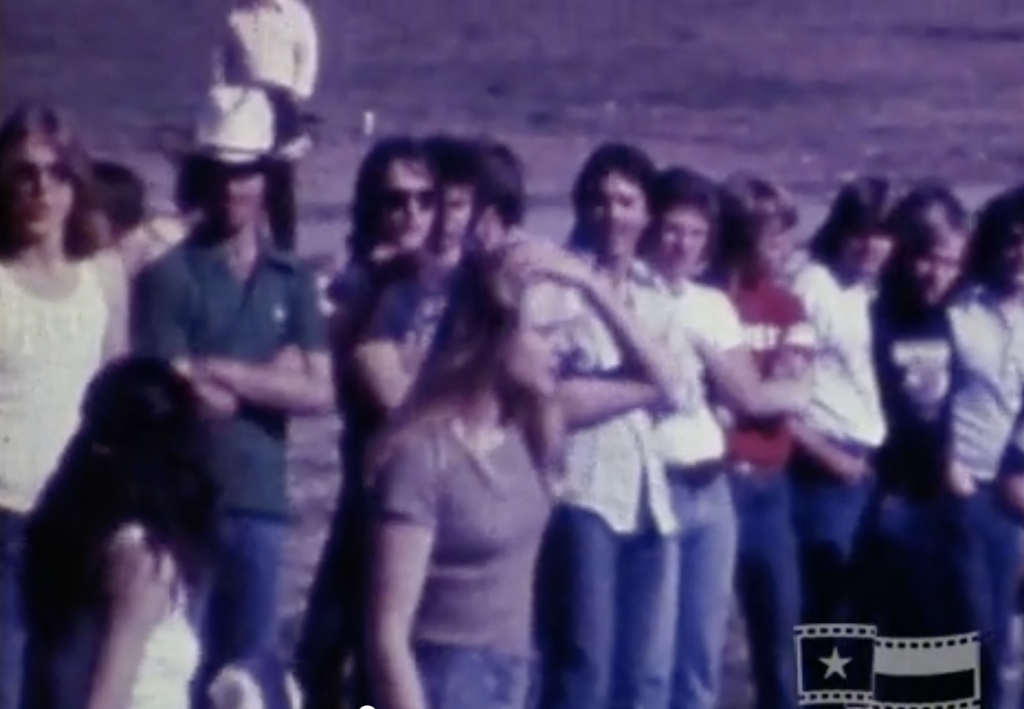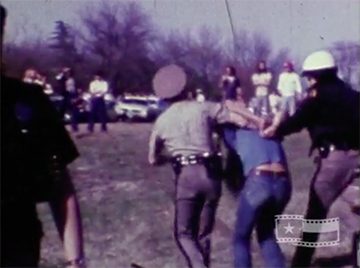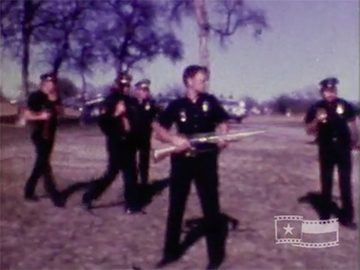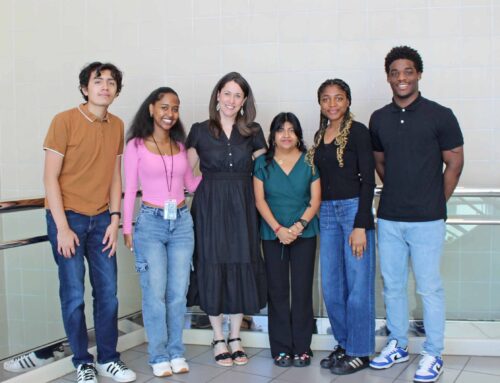Some of you have watched the footage by now, but every time we revisit it, new people are surprised and fascinated to learn about the March 1977 riot that broke out during an an idyllic spring afternoon at White Rock Lake.
One of the more provocative things about this event is that almost 17 minutes of it was captured on film and, thanks to the Dallas Municipal Archives, preserved. If it happened today, we’d see it from all angles on various social media channels. But this is special. Not only can we watch the footage, here, but we also tracked down a few witnesses from and archival articles about that day — they say it was one that changed everything.
What the film shows
As the film begins, grainy, silent footage indicates a sunshiny afternoon at White Rock Lake — sailboats dot the sparkling water. A lanky guy, chambray sleeves rolled to his elbows, clutches a beer in one hand and floats a football with the other. His shaggy-haired recipient canters — past Frisbee flingers and bicycle pedalers — along the shoreline in threadbare trousers and a muscle T.
More than a hundred vehicles lining Lawther Drive and its tributaries – a 1968 Volkswagen Beetle, a 1977 Trans Am, both yellow, among them — make for a scene that looks directed by Richard Linklater, the cast of characters numbering in the thousands. But that was a typical weekend scene here in the 70s.
A waiflike woman in high-waist bell-bottom jeans crosses the lawn. The breeze flutters her flat golden hair as she turns to observe some off-camera action. A defiant expression transforms her face. The camera pans to the focus of her ire — a group of uniformed police officers.
The police first arrived to break up fights that had erupted among parkgoers, officers then told The Dallas Morning News.
About the same time, a motorcycle cop arrested a man for riding the hood of a moving car.
That was at about 3:25 p.m., and reinforcements were descending. They pulled up in squad cars and some carried shotguns, held high.
“Police said officers arriving to aid the patrolman were greeted with a barrage of rocks, beer bottles and any other handy objects,” according to a March 6, 1977 DMN article reported by Tom Belden and Bill Kenyon. “By 4 p.m. tactical officers from every part of the city had been called in.”
Before it was over, at least one officer had fired his shotgun into the air (the video has no sound, but shows a puff of gunpowder and the backfire of the weapon); occupants of two Dallas Police helicopters ordered people to disperse as they hovered above the crowd and even landed on the Bath House lawn for about 10 seconds; officers swept the crowd, swinging billyclubs and flashlights as they advanced, injuring many, according to the DMN. Much of the carnage is caught on the video. In a particularly violent incident, an officer drags a thin young man whose arms are secured behind his head as a second officer strikes the detainee’s exposed gut with a club or flashlight.
The day culminated in 49 arrests, countless injuries (to both hippie and cop) and at least three hospitalizations, including that of Sgt. Kenneth Heard, who arrived on the scene as the fracas gained steam and “shot his service revolver into the air in an attempt to break up the crowd,” according to the DMN story. “Dozens of young persons were grabbed by police, wrestled to the ground, handcuffed and lined up in the grass, face down.”
From his hospital bed at Doctors, Heard justified the shots he and his men fired into the air during the standoff. “We were surrounded and about to be overrun by a mob. It was the only thing we could have done.”
David West, who was 14, regularly rode his bike around the lake, always stopping to watch the “hippie” multitudes gathered near the Bath House to toss the football, drink beer and brandish cool cars.
“I was not there that day,” West notes in the Texas Archive forum. “But I was witness to the sudden change afterward. It was really kind of creepy, especially to a kid just starting to experience his freedom, then suddenly seeing that freedom snuffed out so completely. After the riot, White Rock Lake felt wrong, almost foreboding.”
Dane Myers, 19 at the time, says he was “proud of the crowd’s moxie and balls, standing up against police brutality.”
He and most of his friends distanced from the fray, “but we watched it unfold like watching a movie — from the first cop punching the first hippie. I was a hippie at 19 years old in 1977. I will always be proud of my generation’s understanding of the freedom fought for and given to us from the previous generation.”
Homeowners in the area offered a far less quixotic take on the situation. They had been complaining for months to police and city council members about crowds leaving trash, relieving themselves in private yards, speeding, cursing, blasting music and parking without regard.
“I believe in people having a good time and everything else, but when they get on the street speeding and park cars on lawns and leave them, it becomes a difficult situation,” A.D. McManus, a resident near the Bath House, told the Dallas Morning News a few days after the ruckus. “You tell them to slow down and they just give you the finger or yell an obscenity.”
Another lakeside dweller described a young woman abandoning a car for hours in an inconvenient, illegal spot.
“My husband told her she was blocking the driveway, and she just made a gesture. And it certainly wasn’t a ladylike gesture.”
Barry Secrest, 8 years old at the time, watched the whole thing from his family home on Lake Highlands Drive. He notes that after that day, his “parents and many others petitioned the City of Dallas to put the barricades up on Lawther Drive.”
That was the beginning of the end of the weekly car parade around White Rock Lake.
“They are still up to this day, preventing further cruising,” Secrest says.
After the riot
A week after the fray, reporter Tom Belden was back at the lake. A photograph in his article shows a crowd of people — young, bare feet, shaggy hair, cutoff jean shorts, some with children — riding horses, strumming guitar, playing ball or sunning themselves on blankets.
It’s quintessential White Rock again, right? Not quite.
It’s not clear where at White Rock the photo was taken, though it is worth noting that the rowdier crowd and the quieter set generally occupied opposite sides of the lake, longtime neighbors recall. Gina Cammarata, who grew up near White Rock says, “hippies hung out on the east side and the more conservative ones were on the west side.”
Belden’s March 14, 1977 article, headlined “White Rock park quiet, peaceful” describes a gorgeous spring day, thousands enjoying the weekend, as usual, cars and motorcycles steadily cruising by at five miles per hour.
And, he added after the jump, “out of view of the crowd, 50 Dallas Police tactical officers standing by in case the quiet crowd became a brawling mob as it did a week ago.”








